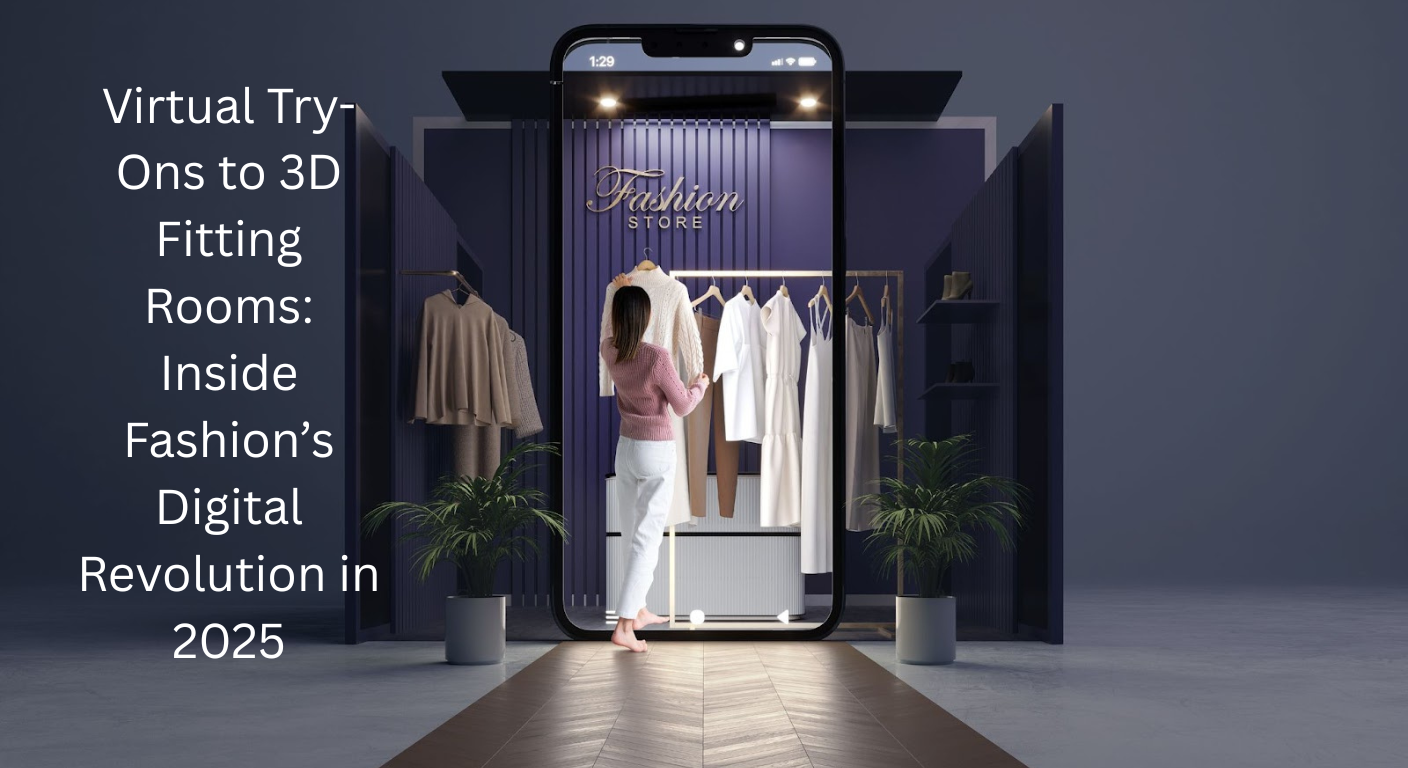The fashion world isn’t just changing, it’s witnessing a digital revolution that’s reshaping how we protect, wear, and interact with clothes. From virtual pass-ons to immersive 3D fitting apartments, 2025 is each about blending style with slice-edge tech. No more guessing if a commodity will fit, look right, or match your vibe. Digital fashion tools now put the power of personalization, convenience, and confidence into the hands of shoppers like no way ahead.
Let’s take a deep dive into how this virtual surge is turning the traditional shopping experience upside down and why it’s only just beginning.
What Is Fashion’s Digital Revolution?
In simple terms, the digital revolution in fashion refers to the integration of technologies like stoked reality (AR), artificial intelligence (AI), 3D modeling, and virtual reality (VR) into the fashion retail experience. While E-commerce changed how we buy, this coming step is about transforming how we see, try on, and engage with apparel before clicking “ add to cart. ”

No more flat photos, standard-size mannequins, or size guesswork. With the rise of virtual fitting tech, shopping becomes:
- More accurate
- More inclusive
- More interactive
1. The Rise of Virtual Try-Ons: Try Before You Buy (Digitally)
Virtual try-ons are one of the most exciting developments in online fashion. These tools allow shoppers to:

- Try on clothing or accessories in real-time using their phone or laptop camera.
- See items on a digital avatar that mirrors their body shape and proportions.
- Get style recommendations based on AI-generated feedback.
Companies like Zyler, Perfect Corp, and Vue.ai are powering these experiences across e-commerce platforms and apps. Major brands like Nike, Sephora, Gucci, and Warby Parker are already integrating AR try-ons for shoes, glasses, makeup, and full outfits.
Why it matters: Virtual try-ons reduce returns, boost shopper confidence, and make fashion more accessible to everyone—regardless of body type or location.
2. 3D Fitting Rooms: The Future of In-Store Shopping
In physical retail, 3D fitting rooms are taking the customer experience to futuristic levels.
Here’s how they work:

- A customer stands in front of a smart mirror or scanner.
- Their body is scanned in seconds to create a realistic 3D avatar.
- Clothing can be digitally overlaid to show fit, drape, and movement—all without ever needing to undress.
This technology isn’t just about looking cool—it saves time, boosts confidence, and empowers shy or neurodivergent shoppers who may find traditional fitting rooms overwhelming.
Retailers leading the charge: Uniqlo, Ralph Lauren, and Adidas have started rolling out smart mirrors and in-store 3D tech in select flagship locations.
3. Personalized Digital Avatars: Fashion’s Newest Influencer
Imagine a virtual version of yourself who can try on clothes, walk the runway, or help you plan outfits. That’s exactly what personal digital avatars are doing.

Tools like Zeekit (by Walmart) and Revery AI let users create life-like avatars by uploading a full-body photo. The avatar mirrors height, body shape, and even posture—making virtual styling far more realistic and customized than traditional size charts ever could.
The advantage: You don’t just see if it fits—you see how it moves with you, what colors suit your skin tone, and how it pairs with pieces you already own.
4. Augmented Reality Shopping: Blending Fashion with Your World
AR takes fashion off the screen and drops it into your living room, sidewalk, or mirror.
With AR-powered apps, you can:

- Project an outfit onto your body using a smartphone camera.
- View a handbag in 3D from every angle.
- Try on sunglasses or shoes while scrolling through Instagram.
Apps like Snapchat, Instagram, and Google Lens are integrating AR filters that allow fashion brands to showcase new collections with just a tap.
Result: AR makes shopping social, fun, and shareable. It’s not just about buying—it’s about playing with your style.
5. Smart Mirrors: The New Wardrobe Assistant
Smart mirrors are like personal stylists built into your dressing room.
Popular in high-end retail stores and luxury hotels, these digital mirrors offer:

- Outfit suggestions based on what you’re trying on.
- Size availability and alternative options.
- Integrated lighting modes to see how clothes look in day vs. night.
Some mirrors even let you change colors, styles, or add virtual accessories—all while viewing your reflection in real time.
Bonus: Smart mirrors also collect data (anonymously) on what customers like, try on, and reject—helping brands create better, more relevant inventory.
6. Digital Clothing & Virtual Fashion in the Metaverse
Fashion is no longer limited to the physical world. Welcome to the era of digital clothing.
Luxury brands like Balenciaga, Dolce & Gabbana, and Louis Vuitton are launching virtual collections meant solely for avatars in games or the metaverse. Meanwhile, fashion-forward platforms like DressX sell digital outfits for users to wear in photos, Zoom calls, or on Instagram.

And yes—it’s profitable. Consumers are buying virtual sneakers, dresses, and accessories that they’ll never wear IRL. Why? Because self-expression in the digital world matters more than ever.
7. The Sustainability Win: Reducing Returns and Waste
One of the most important impacts of virtual try-ons and 3D fitting rooms is their ability to make fashion more sustainable.
Here’s how:

- Accurate fit predictions mean fewer returns—and fewer carbon-heavy shipping trips.
- Brands can create digital samples instead of wasting fabric and labor on physical prototypes.
- Reduced overproduction and inventory waste.
By giving customers the confidence to choose wisely, fashion tech is helping to cut down on fashion’s massive environmental footprint.
8. Inclusivity Through Tech
Traditional fashion often excludes people who don’t fit into narrow beauty or body standards. But virtual fashion tools are changing the narrative.
Now, people of all sizes, skin tones, and abilities can:

- See how clothing looks on avatars that reflect their bodies.
- Try on outfits without the pressure or anxiety of in-person shopping.
- Get custom suggestions that celebrate their individuality, not flatten it.
The result? A more welcoming, empowering, and diverse fashion space for everyone.
Looking Ahead: What’s Next in the Digital Fashion World?
Fashion’s digital revolution is just getting started. Expect to see:
- AI-powered wardrobe assistants that suggest outfits each day.
- Virtual stylists that curate entire looks based on your calendar or location.
- Haptic feedback clothing that lets you “feel” digital garments.
- Entire digital fashion weeks with 3D models and interactive showcases.
Final Thoughts: When Fashion Meets Innovation
From virtual pass-ons to 3D befitting apartments, the fashion world is embracing technology not just to keep up but to lead the charge into a future where style is smart, substantiated, inclusive, and sustainable.
This revolution is not about making fashion less mortal, it’s about making it more empowering for real people in a digital-first world.



